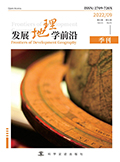

随着全球人口增长和经济快速发展, 人类对自然资源的消耗及对环境的压力不断增加, 生态足迹作为量化这一影响的重要工具, 其研究日益迫切。本文旨在深入分析中国生态足迹现状及其与经济发展的关系, 为制定可持续发展政策提供科学依据。首先, 系统回顾了国内外生态足迹研究进展, 阐述了相关理论基础。其次, 基于熵权TOPSIS模型, 构建了包含社会经济、自然资源和环境三大系统共20个指标的评价体系。通过分析2009—2017年中国各地区数据, 计算了社会经济系统指数、资源指数、环境指数及生态足迹指数。研究结果表明: (1) 中国生态足迹整体水平较低, 呈现显著的区域差异, 西北地区高于东南地区; (2) 各地区在生态足迹水平、空间分布及子系统发展同步性方面存在明显差异; (3) 生态足迹与经济发展之间关联度较弱, 表现出明显不协调性。基于上述发现, 本文提出了优化资源配置、加强环境保护、推动绿色发展等对策建议, 以提升中国生态足迹水平, 促进经济与环境协调发展。研究成果对制定区域发展政策和推动生态文明建设具有重要参考价值。
With the growth of global population and rapid economic development, human consumption of natural resources and pressure on the environment are increasing. As an important tool to quantify this impact, the study of ecological footprint is becoming increasingly urgent. The purpose of this paper is to analyze the current situation of Chinas ecological footprint and its relationship with economic development, so as to provide scientific basis for formulating sustainable development policies. Firstly, the research progress of ecological footprint at home and abroad is reviewed systematically, and the relevant theoretical basis is expounded. Secondly, based on TOPSIS model of entropy weight, an evaluation system of 20 indexes including social economy, natural resources and environment is constructed. By analyzing the data of various regions in China from 2009 to 2017, the socio-economic system index, resource index, environmental index and ecological footprint index were calculated. The results show that: (1) the overall ecological footprint of China is low, showing significant regional differences, and the northwest region is higher than the southeast region; (2) There are obvious differences in the level of ecological footprint, spatial distribution and synchronicity of subsystem development among different regions; (3) The correlation between ecological footprint and economic development is weak, showing obvious incoordination. Based on the above findings, this paper puts forward countermeasures and suggestions such as optimizing resource allocation, strengthening environmental protection and promoting green development, so as to enhance the level of Chinas ecological footprint and promote the coordinated development of economy and environment. The research results have important reference value for formulating regional development policies and promoting the construction of ecological civilization.